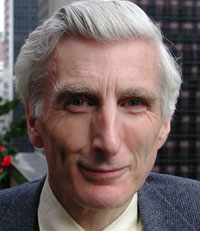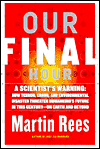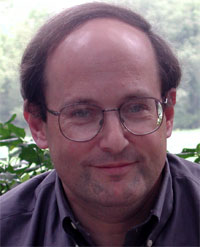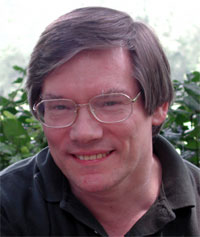All these multiverse ideas lead to a remarkable synthesis between cosmology and physics...But they also lead to the extraordinary consequence that we may not be the deepest reality, we may be a simulation. The possibility that we are creations of some supreme, or super-being, blurs the boundary between physics and idealist philosophy, between the natural and the supernatural, and between the relation of mind and multiverse and the possibility that we're in the matrix rather than the physics itself.


Introductory Remarks
Cosmology and astrophysics are branches of physics in which one needs an unusual combination of breadth and depth to excel. Martin Rees is arguably the finest all-round theoretical physicist working today. I do not always agree with him—especially in areas outside physics itself—but I always want to know his opinion. As does every wise person.
—David Deutsch
I have known and admired Martin Rees since the early 1970's when we were postdocs together at Cambridge University. Even at that stage Martin's extraordinary breadth of knowledge and expertise were apparent. Pick almost any topic in astronomy or physics, and he would have a carefully evaluated position worked out. He is one of only a few great scientists who is both open-minded and healthily-skeptical. At a time in his career when he could justifiably rest on his laurels, Martin Rees is as energetic and active as ever, offering stunning insights into many emerging scientific fields.
— Paul Davies
Martin Rees one of the most influential people working in astrophysical and cosmological theory. He is simultaneously open to new ideas and suggestions and careful and rigorous in his response and criticisms. Also, it's difficult to suggest an idea about the evolution of structure in the universe or the formation of the galaxies that he hasn't thought of or played with or perhaps even written about at some time. Much of the credit for what I like to think of as the discovery that the laws of nature are special in ways that allow the universe to be very structured is due to him.
—Lee Smolin
Martin Rees is my favorite theoretical astrophysicist. He is not only incredibly knowledgeable, but he is also wonderfully helpful to his colleagues. He has contributed over 500 papers to the scientific literature, making important contributions to almost every aspect of astrophysics. He is especially well-known for his work on galaxy formation and the theory of cold dark matter, and also for his work on active galactic nuclei and the black holes that are believed to drive them.
—Alan Guth
There are two types of cosmologists active today: those who seek the physical principles driving the global properties of the Universe, and those who concentrate on the details of astrophysical objects, like galaxies, quasars, and black holes, that give complementary information about structure at smaller distances. Martin Rees is one of the few cosmologists exploring both venues, giving him a unique perspective from which to develop scientific ideas, and to synthesize known ideas for a broader audience. He always has something
interesting to say.
—Lisa Randall

SIR MARTIN REES is Royal Society Professor at Cambridge University, Fellow of King's College, the UK's Astronomer Royal, and a Fellow of the Royal Society. He was previously Plumian Professor of Astronomy and Experimental Philosophy at Cambridge, having been elected to this chair at the age of thirty, succeeding Fred Hoyle. He has originated many key cosmological ideas: for example, he was the first to suggest that the fantastically energetic cores of quasars may be powered by giant black holes. For the last twenty years, he has directed a wide-ranging research program at Cambridge's Institute of Astronomy.
He is the author of several books, including Gravity's Fatal Attraction (with Mitchell Begelman); New Perspectives in Astrophysical Astronomy; Before the Beginning: Our Universe and Others; Just Six Numbers: The Deep Forces that Shape the Universe; Our Cosmic Habitat; and Our Final Hour: A Scientist's Warning: How Terror, Error, and Environmental Disaster Threaten Humankind's Future in this Century—on Earth and Beyond (published in the UK as Our Final Century: The 50/50 Threat to Humanity's Survival).

Martin Rees' Edge Bio page
David Deutsch's Edge Bio Page
Paul Davies' Edge Bio Page
Lee Smolin's Edge Bio Page
Alan Guth's Edge Bio Page
Lisa Randall 's Edge Bio Page
















